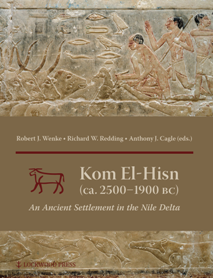| Main » Ad Board » ДРЕВЕН ЕГИПЕТ И АФРИКА » Археология |
Kom El-Hisn (ca. 2500-1900 BC): An Ancient Settlement in the Nile Delta of Egypt
| 03.03.2018, 17:40 | |
Ком ел Хисн, древният Яму или Иму, е древноегипетски град в северозападната част на Делтата на Нил. Разцветът му е през периода на Старото царство, когато е столица на Третия ном на Долен Египет ("Дома на добитъка"), като е обитаван и през Първия преходен период и епохата на Средното царство. Богиня-покровител на града е Хатхор, често сливана със Сехмет. Настоящият сборник е публикация на материалите, подготвени от американска експедиция през 80-те години. - на английски език, от Google Docs,формат PDF, файлът не е архивиран. Сваляне с ляв бутон (downloading by left button) от страницата на предоставящия сървър, после през бутона стрелка надолу/after by down arrow button.
| |
| Views: 1799 | Placed till: 03.04.2018 | Rating: 0.0/0 | |

